Using facade design to reduce embodied carbon
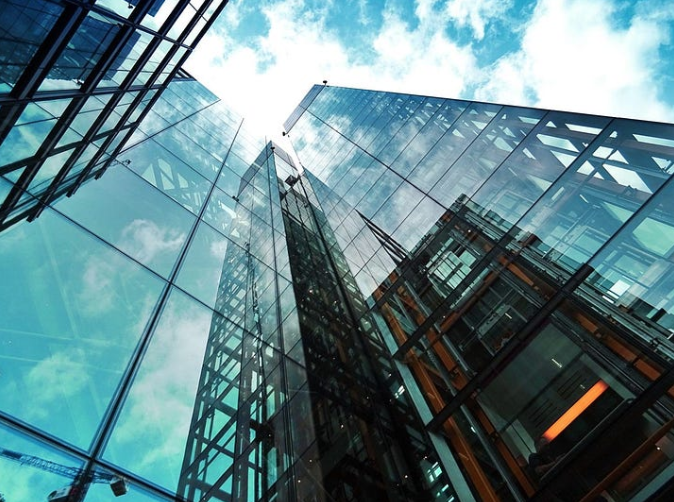
Understanding the relationship between embodied carbon and operational performance is key to making targeted decisions to reduce emissions across supply chains and design processes.
Nearly 40% of the global 2050 budget will come from the built environment sector, which will also be responsible for many building renovations with an emphasis on operational performance. According to global decarbonization trajectories, the industry must cut these emissions by 50% by 2030 if it wants to reach net zero by the middle of the century and meet the Paris Agreement’s climate goals.
Buildings’ operating energy carbon emissions have decreased as a result of stricter energy regulations, more energy-efficient design requirements, and a move toward both on- and off-site renewable energy production.
Operational carbon vs. embodied carbon
The proportion of embedded carbon to operational carbon output is growing as building performance has improved. While operational carbon can be continued to be optimized over the course of the building’s life, embodied carbon cannot be changed after the building has finished being built. According to a report by Architecture 2030, absorbed carbon would account for roughly 60% of all emissions from new construction by 2040 if nothing is done to address that.
Embodied carbon needs to be at the forefront of designers’ thoughts to produce a net zero built environment. According to the 2030 Climate Challenge Targets issued by the Royal Institute of British Architects (RIBA), designers must reduce the building’s embodied carbon by 50 to 70 percent before offsetting it. This requires a decrease in the total life cycle of embodied carbon for commercial buildings to less than 750 kgCO2/m2.
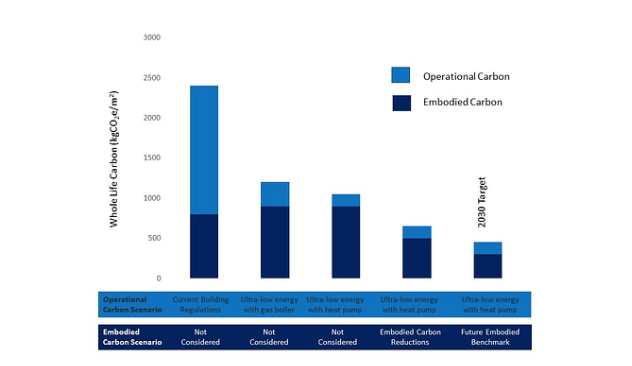
Figure 1 — Diagram Showing Operational and Embodied Carbon Trajectory (LETI Climate Emergency Design Guide)
Reducing embodied carbon through facade design
In order to lower the embodied carbon of facades and maintain their sustainability, architects must take into account seven key elements when designing and specifying them as Teni Ladipo and David Metcalfe recommend at RIBA Journal:
1. When designing the building’s massing, consider the low carbon form factor.
2. Minimize the number of facade system types and materiality variations.
3. Optimize and standardize the facade detailing.
4. Consider a balance between aesthetics and the selection and material quantities of finish systems.
5. Combine Visual mock-ups (VMU) with Performance mock-ups (PMU) and reuse them.
6. Look for ways to reduce visual standards by allowing for greater tolerances.
7. Design for disassembly and replacement.
Choosing the best advice for each project’s needs and coordinating your efforts are essential for sustainable adaptation. Knowing that the façade is responsible for between 10 and 20 percent of the building’s embodied carbon footprint, and therefore materials choice has a significant impact on the overall embodied carbon of a façade, we included an illustration on embodied carbon in facade materials below.
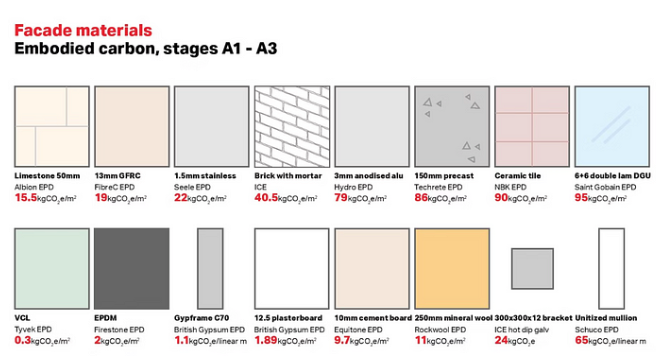
Figure 2. Embodied Carbon, Stages A1 — A3 / Make architects
If you can’t measure it, you can’t change it
Materials with a large carbon footprint include cement, metals, chemicals, and plastics. Precast concrete, concrete masonry units, aluminum and metal cladding, foam insulation, and other cladding materials can all increase a building’s embodied carbon due to energy-intensive manufacturing processes, direct emissions from chemical processes, or direct releases of substances like blowing agents. This is true even though many of these materials are primarily used in the structure of a building.
By incorporating bio-based materials like wood, hemp, straw, or other carbon-sequestering materials into the wall and roof components of structures, we have the opportunity to store carbon. These goods effectively store the CO2 that was removed from the atmosphere during the growth of the feedstock tree or crop inside the structure.
Durability is another performance criterion that benefits embodied carbon in addition to being appreciated from a safety and financial standpoint. The longer the lifespan of envelope materials, the less frequently they need to be replaced or repaired, which lowers the amount of extra processing or manufacture.
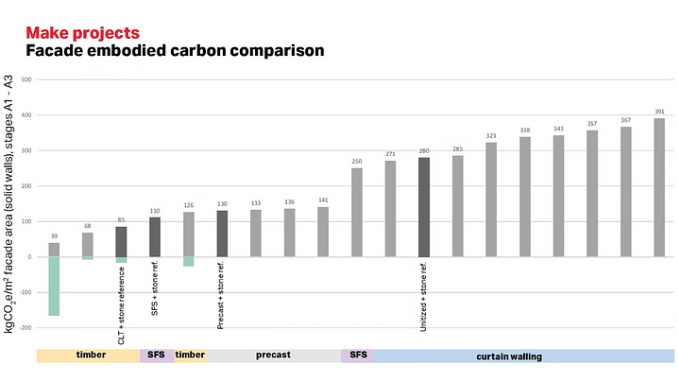
Figure 3 Facade Embodied Carbon Comparison / Make architects
Looking at the comparison by facade type, it’s interesting to see that all the higher embodied carbon facades are curtain walls, where high embodied carbon aluminium has a huge impact. Layering up materials, as in a unitized panel with a rainscreen in front, or a ‘shadow box’ with a double-glazed unit and metal sheet behind, has a big impact on embodied carbon. Simpler facades with fewer layers are often lower carbon, and here precast concrete has a role to play. These comparisons show us where to focus our material research and design innovation in future.
Track the embodied carbon footprint of façade systems at 2050 Materials
2050 Materials is dedicated to architects & designers looking to build sustainably for climate change mitigation.
Apart from the intricacies of a given project design, we’ve found it useful to create some basic comparison models to understand the embodied carbon weighing of various facade systems because each project is unique. Our project tool takes into account just the product manufacture stages, A1 — A3 or ‘cradle to factory gate’, to avoid the project specifics of transport, location and construction.
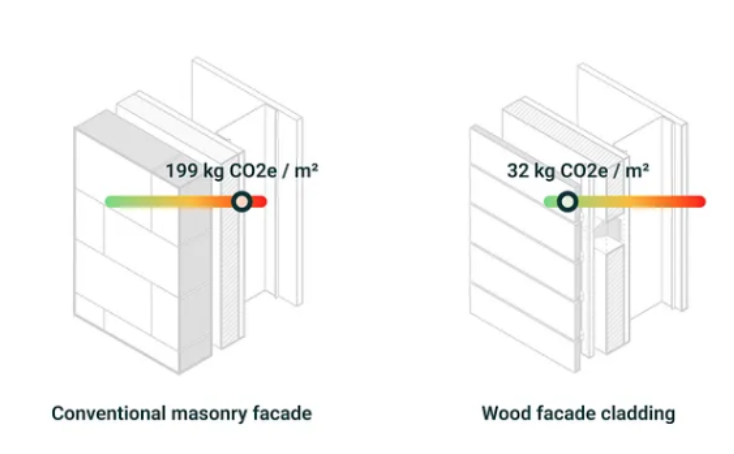
How to deal with the facade problems
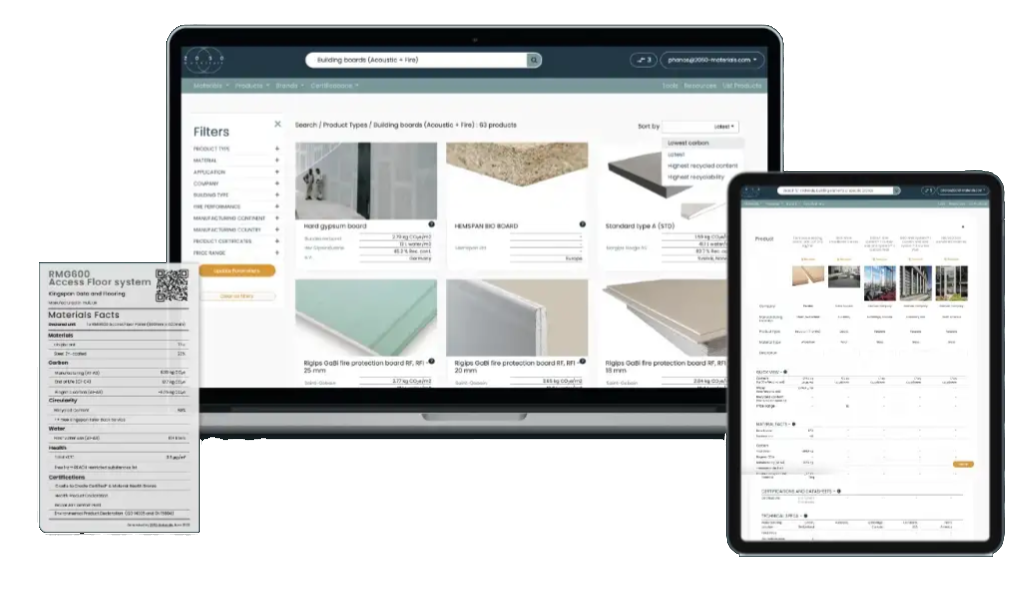
We built 2050 Materials to guide architects and designers design truly sustainable buildings. For more information feel free to drop us a quick email on info@2050-materials.com and we will get in touch with you to help you navigate better the world of sustainability.
Sources
CWCT: How To Calculate The Embodied Carbon Of Facades: A Methodology — Published September 2022
CIBSE JOURNAL: Facing up to embodied carbon in façades
ARUP: Carbon footprint of façades: significance of glass
Make Architects: Comparing embodied carbon in facade systems
Wintech Façade Engineering: Reducing Embodied Carbon Through Façade Design
Related articles

The Most Interesting Low Carbon Products in Office Design
In this article and collection, we highlight 11 outstanding products that contribute to a lower carbon footprint in office design.
Read more
Top Low Carbon Building Boards: Performance, Benefits, and Use Cases
The building boards highlighted in this article and collection showcase low-carbon innovation in modern construction.
Read more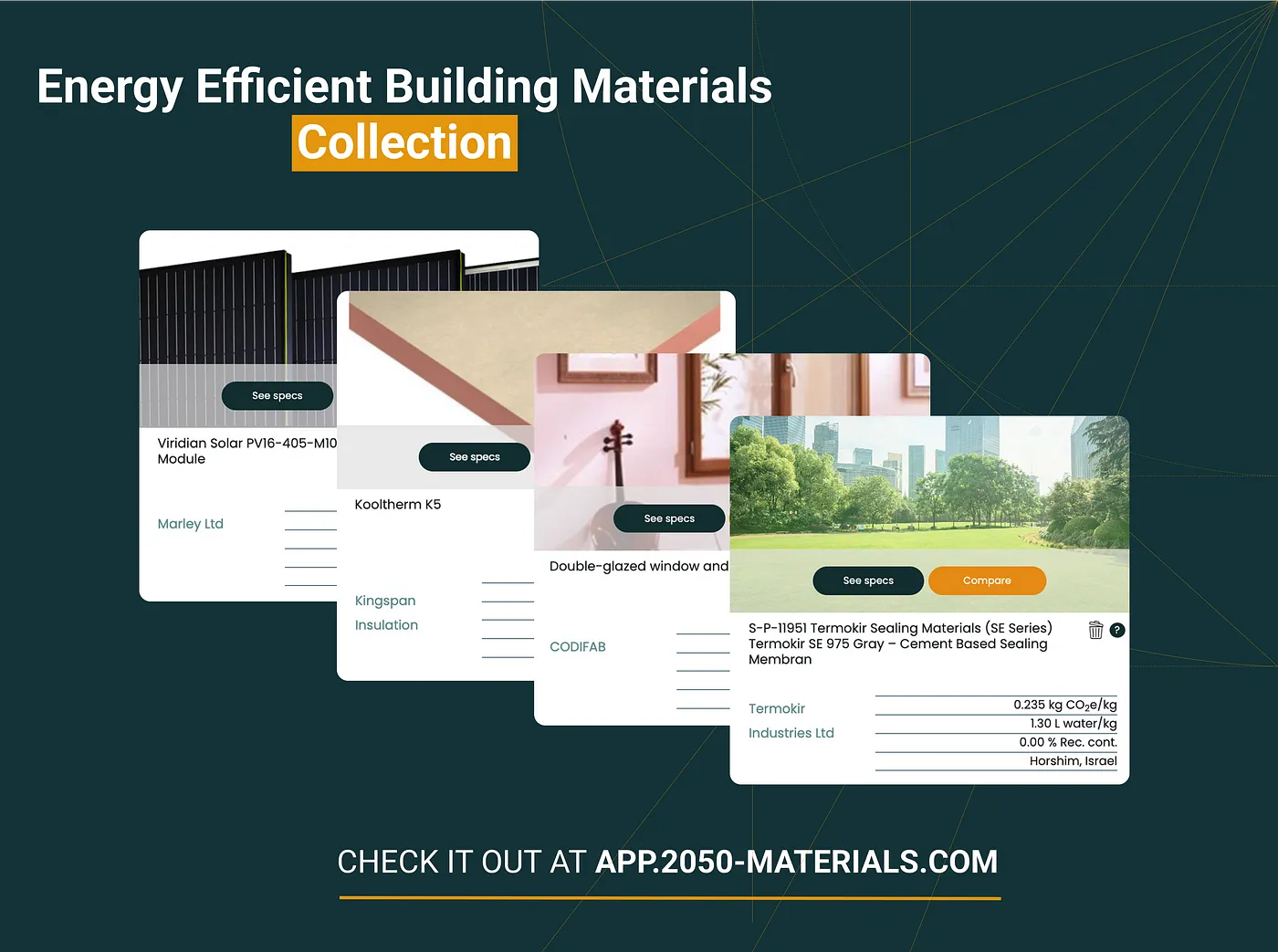
11 Interesting Energy Efficient Building Materials for Reduced Environmental Impact
Discover a collection of energy efficient building materials that not only reduce greenhouse gas emissions but also contribute to long-term durability.
Read more